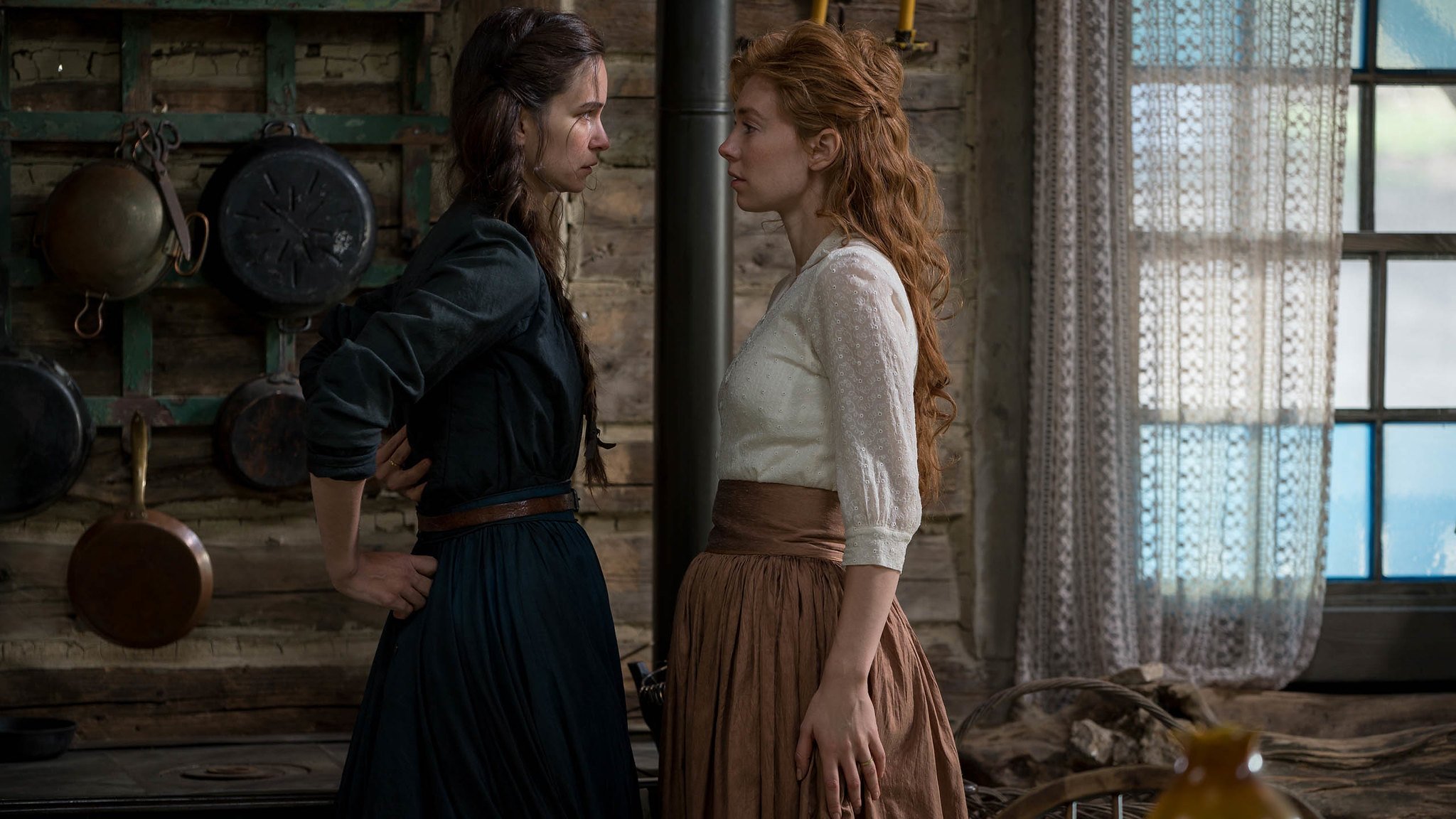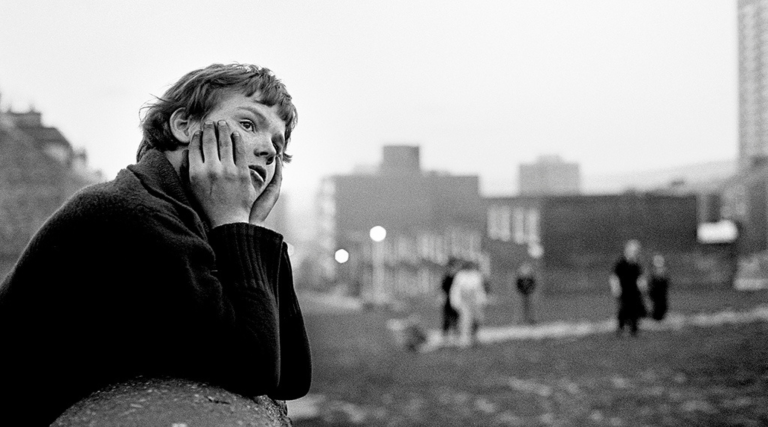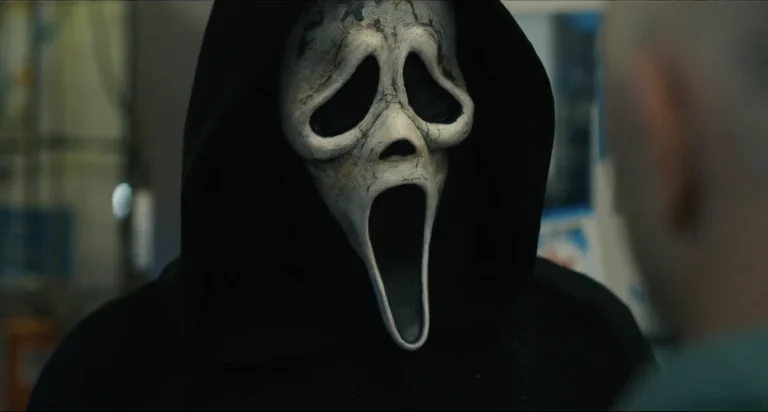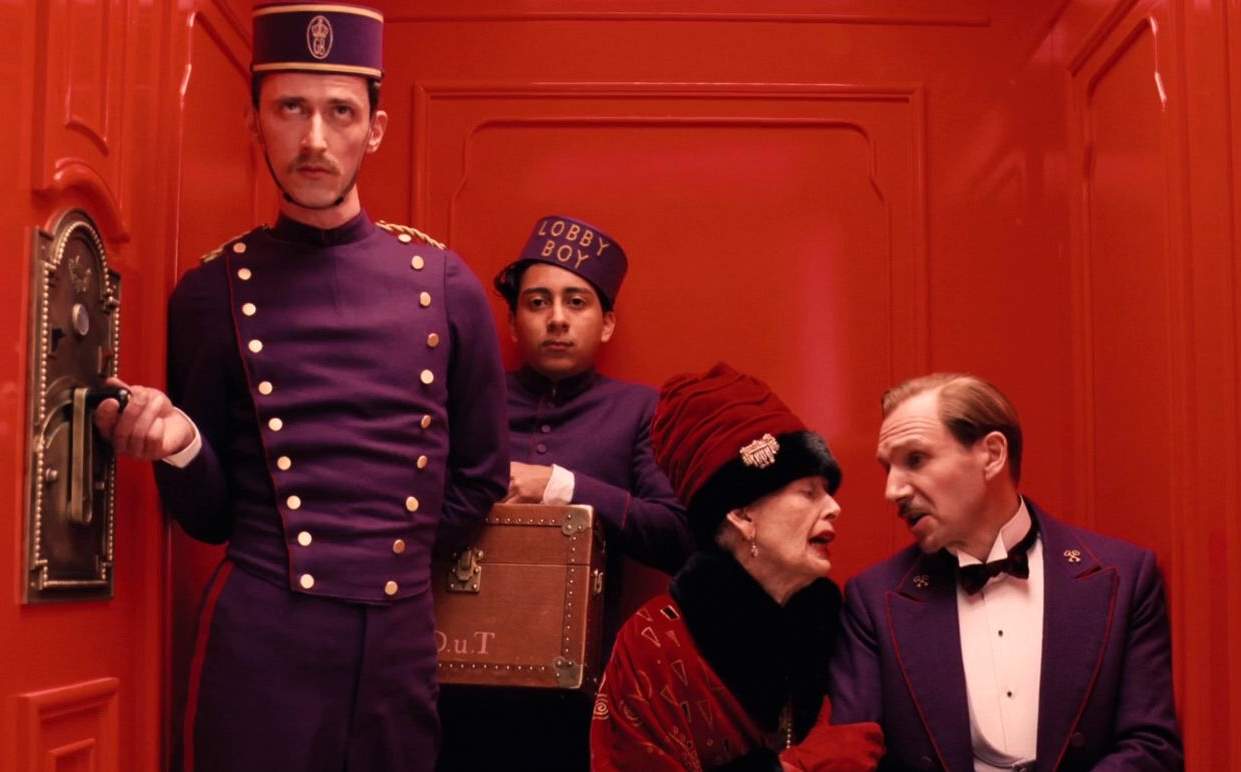I say this with great disdain that the men in Mona Fastvold’s ‘The World to Come‘ should have been left as side commodities. This is because the queer love story at its center is so magnetic and sensuous that the men just serve as plot points to give this period setting a little more girth. Set in the mid-19th century American East Coast frontier, the film follows the life of two families set at extreme ends of what seems like a large piece of farmland. One can instantly make a difference between their social stature even though it’s not evidently the point of the film.
Abigail (Katherine Waterston) and Dyer (Cassey Affleck) are a mourning couple who have lost their only daughter to diphtheria. The harshness of winters in the states and the struggle to keep the family ledger steady has brought them to a kind of crossroad. They are also kind of detached from their lives because the sadness is seemingly too heady to really go away.
While Dyer has lost all sense of hope to really come out of it, Abigail – a hyper-literate, supporting, and gentle wife pens her days down. We start somewhere in 1856. The dissolute winters, cattle, and shared workloads are helping them run the house for the time being. Days become weeks and months without a sign of change and change is something that Abigail is waiting for.
Related to The World to Come – Land [2021]: ‘Sundance’ Review – Robin Wright helms a moving tale about resilience
The film is narrated through her diary in her own voice. The setting encapsulates the commencement of the New Year but hope is nowhere to be found. “The water froze on the potatoes as soon as they were washed. With little pride and less hope, we begin the new year,” her voiceover announces. But as they say – Hope is a 4 letter word that often sneaks up on you.
Much like her ink, Abigail wishes to escapes in words. If not words, in paper maps. She desires an Atlas for her birthday but is instead bestowed with a neighbor who instantly rattles her affectionate corners. When Tallie arrives to greet her now new neighbor, flowers bloom in Abigail’s waste-land of a soul. She instantly recognizes her auburn hair and how her every sigh would make her want them flowing around in the wind. The fire is ignited, a connection is formed and a life beyond the hopelessness is now a visible getaway.
The two women meet and re-meet until their meetings turn into flowery afternoons that don’t nudge upon the heads or toes of time. Time is now a construct for them that is only reimagined when they realize that it is the early 19th century and men with bloated masculinities are keeping watch. Their romance shall thus remain hidden as a spring stint.

A romance between two women in the early 19th Century? Was that even a thing? Did it even matter? What about infidelity? These are not the questions Mona Fastvold is eager to answer. She isn’t even vaguely interested in turning her film into a morality tale. Her focus almost always remains on Abigail and how her life turns into something more real when Tallie arrives. The romance serves as a sort of cathartic moment for Abigail whose life, along with her husband’s was drowned in grief.
Fastvold is also interested in dissecting the familial front that has been under the regime of the men for centuries now. In drawing a sort of parallel to the contemporary world, she puts her material at the risk of sounding and feeling like something that belongs to the present century more than the 19th. While there’s no issue with questioning pertinent issues that are still a bigger part of life, the period setting often feels rendered on, making this less and less believable when the romance is not the focus.
This is especially frustrating as at its core, the romance is all that is important. However, her lens often meanders over more issues at hand. Christopher Abbot and Casey Affleck are presented as the two sides of the coin when toxicity is concerned. If Abigail and Tallie were to exchange places, the tragicness of the story would take another turn that keeps the audience on a fearsome edge. This is where Fastvold’s direction feels diverting and her grasp on the narrative doesn’t hold itself together.
Also, Read – On the Count of Three [2021]: ‘Sundance’ Review – Constantly funny bromance takes a sharp look at men’s mental health
She more often than once pulls out her focus from the two women to the monotony, decay, and struggle the families have to deal with in order to withstand the difficulties of living. This puts the narrative at a slight risk of feeling like a ritual that serves as an ulterior motive when it doesn’t. The over-resilence on voice-over also gets tiresome after a point of time, in spite of some finely written dialogues.
The Queer story that the film presents is poetic and often unnaturally beautiful; both Vanessa Kirby and Katherine Waterston are endlessly watchable but there’s always a feeling of incompleteness hanging over it. The longing and familiarity of the final act also make its tragicness feel unearned. This is saddening because “The World to Come” has the ingredients of a great film that aren’t mixed well. I wish I was left with ‘astonishment and joy,’ I wish!
★★★
Trailer
‘THE WORLD TO COME’ PREMIERED AT THE 2021 SUNDANCE FILM FESTIVAL
CLICK HERE FOR OUR COMPLETE SUNDANCE COVERAGE
BLEEKER STREET WILL BE RELEASING THE WORLD TO COME IN SELECT THEATRES ON FEBRUARY 12
DIRECTOR: Mona Fastvold
SCREENWRITER(S): Ron Hansen, Jim Shepard
EDITOR: Dávid Jancsó
DOP: André Chemetoff
MUSIC: Daniel Blumberg
COUNTRY: UNITED STATES
LANGUAGE: ENGLISH
RUNTIME: 98 MINUTES
LINKS: IMDB, ROTTEN TOMATOES



![Adam [2019]: ‘IFFI’ Review – An Admirable Film about Living Within the Social Fringes](https://79468c92.delivery.rocketcdn.me/wp-content/uploads/2019/11/Adam_pic-2-768x431.jpg)
![The Balcony Movie [2021]: ‘Locarno’ Review – Perceiving the Rhythmic Flow of Life from a Everyday Space](https://79468c92.delivery.rocketcdn.me/wp-content/uploads/2021/08/The-Balcony-Movie-2021-768x431.jpg)


![Gone Girl [2014] Review: Our Quiet Secret](https://79468c92.delivery.rocketcdn.me/wp-content/uploads/2019/07/Gone-Girl-Rosamund-Pike-1-768x320.jpg)
